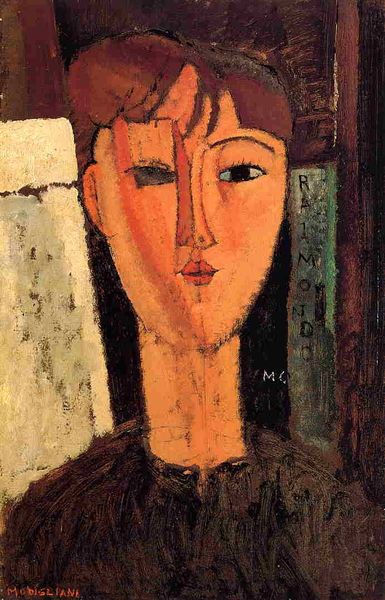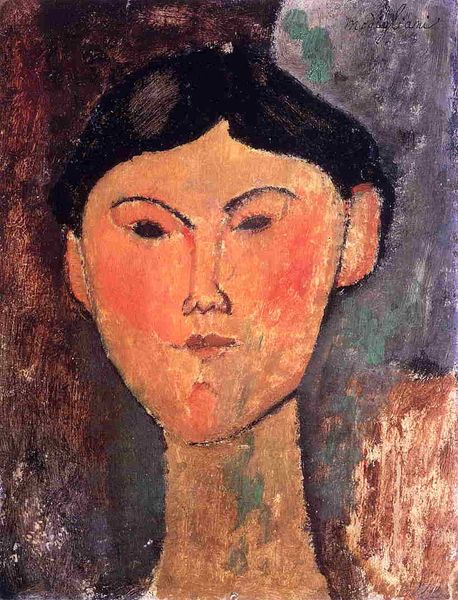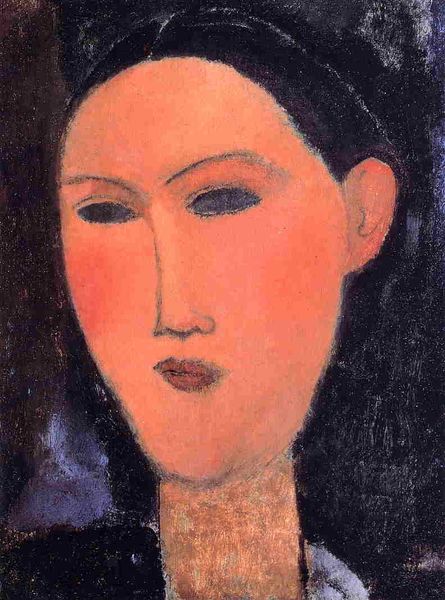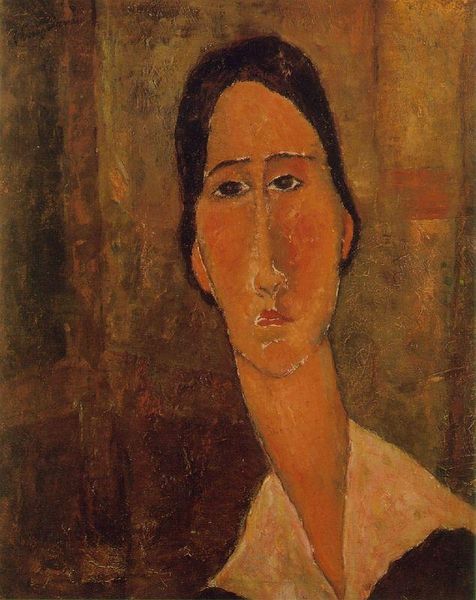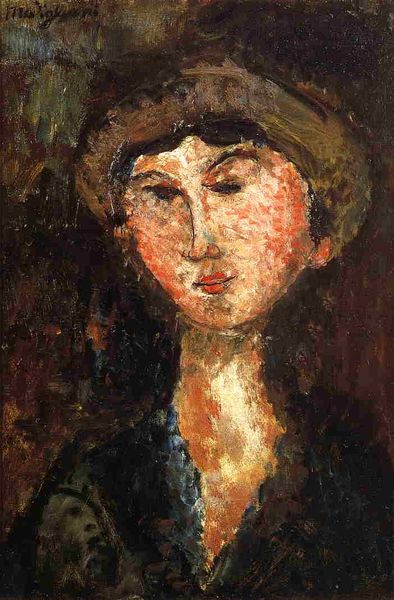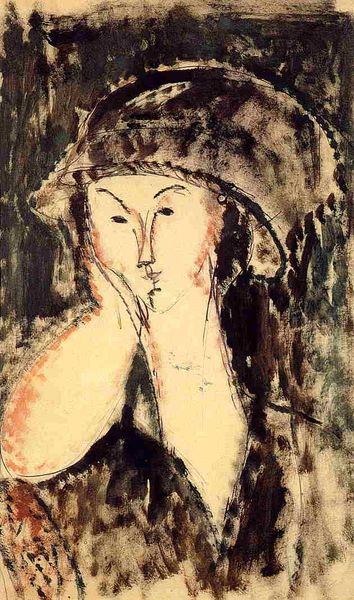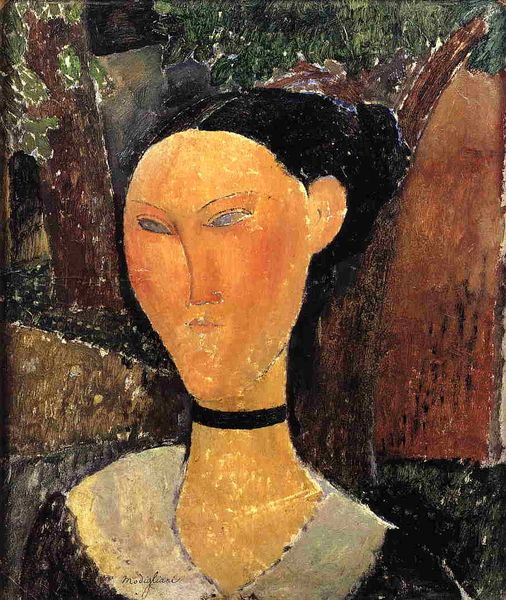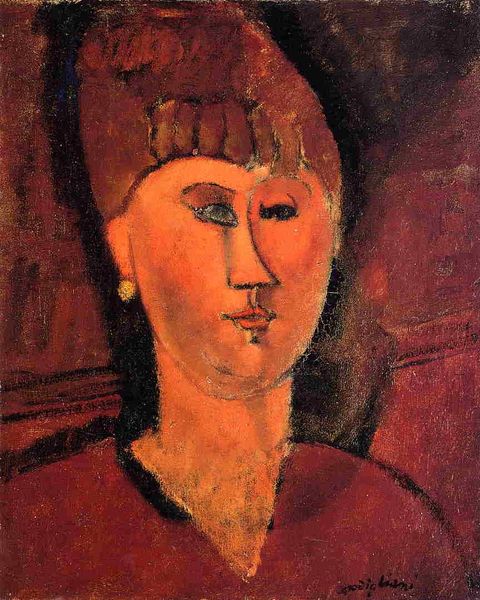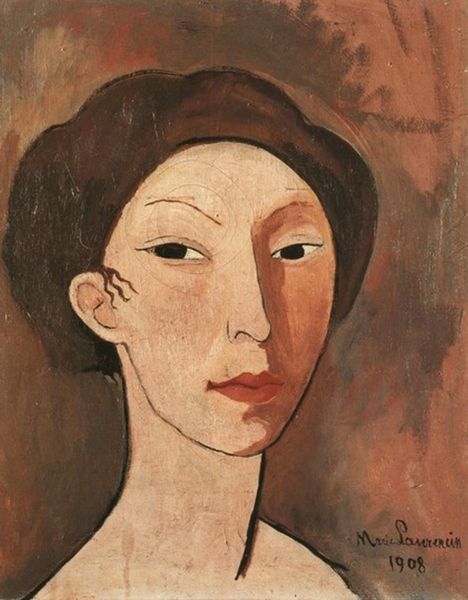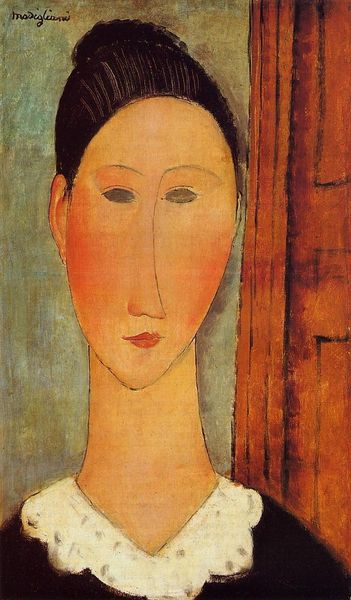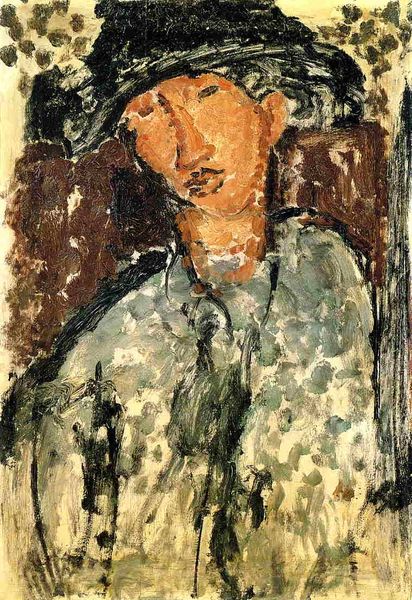
oil-paint, impasto
#
portrait
#
oil-paint
#
oil painting
#
impasto
#
italian-renaissance
#
modernism
Dimensions: 45.5 x 37.5 cm
Copyright: Public domain
Curator: Good afternoon. We are standing before "Fat Child," an oil painting by Amedeo Modigliani, created in 1915. It currently resides here in the Palazzo Brera in Milan. What strikes you immediately? Editor: The most prominent elements for me are the eyes that aren't really there, almost swollen shut, creating an inner, pensive mood. I immediately wonder what's going on in their interior world. Curator: The painting embodies Modigliani's modernist exploration of form. It's crucial to remember the artistic environment of 1915: many artists were grappling with how to represent reality after the rise of photography. Also, note the historical context – Italy on the brink of major upheaval during World War I. How might such turmoil have informed the artist? Editor: Indeed, Modigliani's choice to de-emphasize realistic representation – for instance, look at that elongated nose – is quite telling. Such features aren’t just abstract forms, though. The heavy lidded eyes bring a specific character. In iconography, obscured or closed eyes can signify spiritual introspection, turning away from the external world towards internal contemplation. Curator: An interesting interpretation, especially within the context of wartime anxiety. The child's weight could signify social status as food insecurity increased during this time. Modigliani often challenged academic traditions and represented a specific rejection of past conventions through painting methods, so to frame it entirely with iconography risks overlooking the radical nature of its execution and place. Editor: I agree that to ignore the painting's innovation would be a mistake. Yet, even while forging new ground, the symbolic resonances persist. Doesn't the muted color palette lend an overall sense of subdued melancholy, further enhancing this inner emotional experience? Curator: Yes, the colors are intentionally restrained. Perhaps this quietness is another response to the frenetic pace of early 20th-century life. The muted tones serve a counterpoint, pushing the child toward quiet reflection instead. Editor: Examining “Fat Child” reminds me of how individual artistry navigates historical circumstance, forging an enduring impact by visual storytelling. Curator: It certainly offers a glimpse into an early 20th century world while transcending its historical circumstances.
Comments
No comments
Be the first to comment and join the conversation on the ultimate creative platform.
